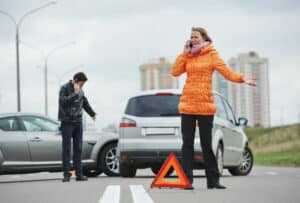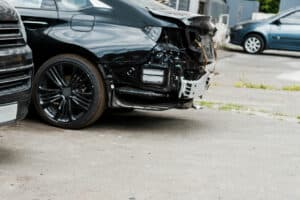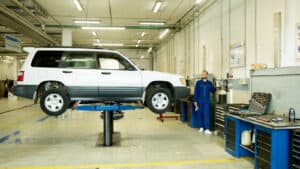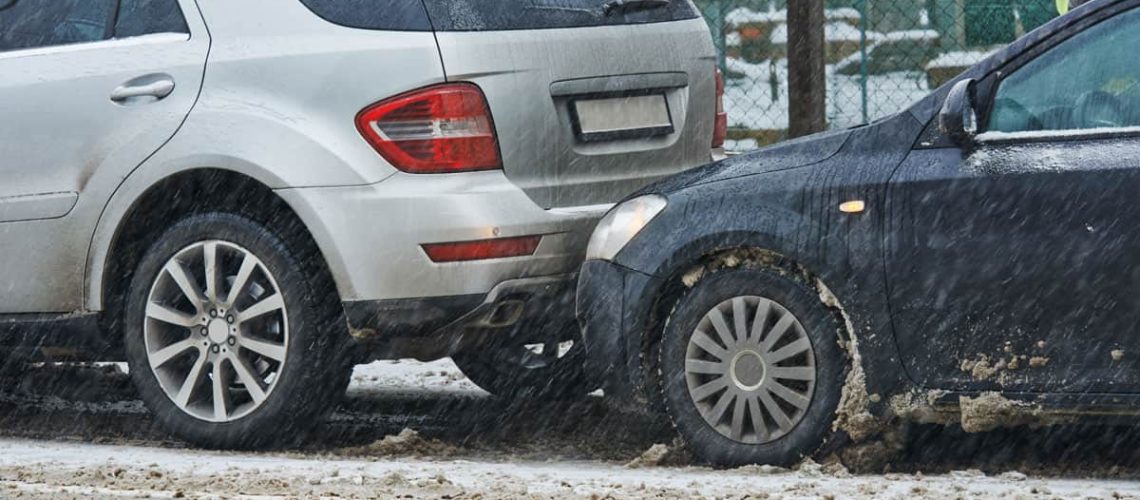As an experienced Idaho Falls auto body team, we’ve seen our fair share of rear-end collisions. Even a minor accident can result in serious damage that may not be immediately visible. Auto collision damage can sometimes be difficult to diagnose. That’s why we want to share with you the most common problems we come across after a rear-end collision so you know what to watch out for.
While some damage is obvious, such as a dented bumper or a broken taillight, there may be underlying issues that are less noticeable that may also require the help of an auto body mechanic. For example, the impact could cause damage to your suspension or steering system, which can create safety concerns if left unaddressed.
We always recommend having your car thoroughly inspected by a trusted mechanic after a rear-end collision, even if it seems like there’s no major damage.
If you find yourself in this unfortunate situation, bring your car to us for Idaho Falls auto body repair—we’ll take care of it. Until then, here are some of the most common car problems after rear end collision.
What Is a Rear End Collision?
 A rear-end collision is a type of car accident that occurs when one vehicle collides into the back of another vehicle. These types of accidents can happen at any speed, from low-speed fender benders in traffic to high-speed collisions on highways.
A rear-end collision is a type of car accident that occurs when one vehicle collides into the back of another vehicle. These types of accidents can happen at any speed, from low-speed fender benders in traffic to high-speed collisions on highways.
In most cases, rear-end collisions are caused by the driver of the following vehicle not leaving enough space to stop safely, resulting in a rear-end impact. The force of the collision can cause damage to both vehicles, ranging from minor scrapes and dents to major structural damage.
Whiplash injuries are also common in rear-end collisions, as the force of the impact can cause a person’s head and neck to jerk forward and backward suddenly. In some cases, these injuries can be severe and may require medical attention.
It’s important to note that in some cases, the driver of the vehicle that was hit from behind may be partially at fault for the accident. For example, if their brake lights were not working or they abruptly stopped in traffic, they may be found partially responsible for the collision.
If you’ve been involved in a rear-end collision, it’s important to seek medical attention and consult with an experienced auto body mechanic to assess the damage to your vehicle.
What to Do After a Rear End Collision
 Being involved in a rear-end collision can be a stressful and overwhelming experience, whether someone hits your parked car or while you’re moving. However, it’s important to stay calm and take the necessary steps to ensure your safety and protect your legal and financial interests. Here’s what you should do after a rear-end collision:
Being involved in a rear-end collision can be a stressful and overwhelming experience, whether someone hits your parked car or while you’re moving. However, it’s important to stay calm and take the necessary steps to ensure your safety and protect your legal and financial interests. Here’s what you should do after a rear-end collision:
- Check for injuries: First and foremost, check yourself and your passengers for any injuries. If anyone is injured, call 911 immediately and wait for medical assistance to arrive.
- Move to a safe location: If possible, move your vehicle to a safe location away from traffic, such as the side of the road or a nearby parking lot. Turn on your hazard lights to alert other drivers.
- Exchange information: Exchange information with the other driver(s) involved in the accident, including their name, contact information, insurance details, and license plate number. Take photos of the damage to both vehicles and the surrounding area, including any skid marks or debris.
- Call the police: Even if there are no injuries, it’s a good idea to call the police and file a report. This can help with insurance claims and legal issues down the line.
- Contact your insurance company: Call your insurance company as soon as possible to report the accident and provide them with the necessary information. They will guide you through the claims process and advise you on what steps to take next.
- Have your vehicle inspected by an auto body mechanic: Even if there’s no visible damage, have your vehicle inspected by an experienced auto body mechanic to ensure there are no underlying issues that could compromise your safety or the performance of your vehicle.
By following these steps, you can protect yourself and your vehicle after a rear-end collision and minimize the potential for legal or financial complications.
Most Common Rear End Collision Damage
 After a rear-end collision, there can be a wide range of damage to your vehicle, ranging from minor cosmetic issues to major structural damage. Here are some of the most common types of damage we see as auto body mechanics:
After a rear-end collision, there can be a wide range of damage to your vehicle, ranging from minor cosmetic issues to major structural damage. Here are some of the most common types of damage we see as auto body mechanics:
- Frame damage: The force of a rear-end collision can cause significant damage to the frame of your vehicle, which is the main structural component that supports the body and engine. Frame damage can affect the alignment, handling, and safety of your vehicle, and may require extensive repairs or even replacement.
- Bumper damage: The bumper is designed to absorb impact in a collision and protect the rest of your vehicle from damage. However, even a minor rear-end collision can cause damage to your bumper, such as cracks, dents, or scratches. Depending on the severity of the damage, the bumper may need to be repaired or replaced.
- Suspension damage: The suspension system is responsible for keeping your vehicle’s wheels in contact with the road and providing a smooth ride. However, a rear-end collision can cause damage to the suspension components, such as shocks, struts, or control arms, which can affect the handling and stability of your vehicle.
- Electrical damage: Modern vehicles rely on complex electrical systems to control various functions, such as the lights, airbags, and engine. A rear-end collision can cause damage to the electrical wiring or sensors, which can result in malfunctions or warning lights on your dashboard.
- Aesthetic damage: Even if there’s no significant damage to the underlying components of your vehicle, a rear-end collision can cause cosmetic damage, such as scratches, dents, or broken taillights. While these issues may not affect the performance or safety of your vehicle, they can still be unsightly and decrease its resale value.
It’s important to have your vehicle inspected by an experienced auto body mechanic after a rear-end collision, even if there’s no visible damage. Some issues may not be immediately apparent and can cause safety concerns or lead to further damage down the line. By addressing any issues promptly, you can ensure the safety and performance of your vehicle and prevent costly repairs in the future.
Contact Classic Auto Collision Center If You’ve Been Involved In a Rear End Collision
 In conclusion, a rear-end collision can cause a rang e of damage to your vehicle, from minor cosmetic issues to major structural damage. While some damage may be immediately noticeable, such as a dented bumper or broken taillight, there may be underlying issues that require the expertise of an experienced auto body mechanic. Frame damage, bumper damage, suspension damage, electrical damage, and aesthetic damage are some of the most common issues we see after a rear-end collision.
In conclusion, a rear-end collision can cause a rang e of damage to your vehicle, from minor cosmetic issues to major structural damage. While some damage may be immediately noticeable, such as a dented bumper or broken taillight, there may be underlying issues that require the expertise of an experienced auto body mechanic. Frame damage, bumper damage, suspension damage, electrical damage, and aesthetic damage are some of the most common issues we see after a rear-end collision.
If you’ve been involved in a rear-end collision, contact Classic Auto Collision Center—we’ll diagnose the problems and give you an estimate, and complete repairs quickly and comprehensively.

